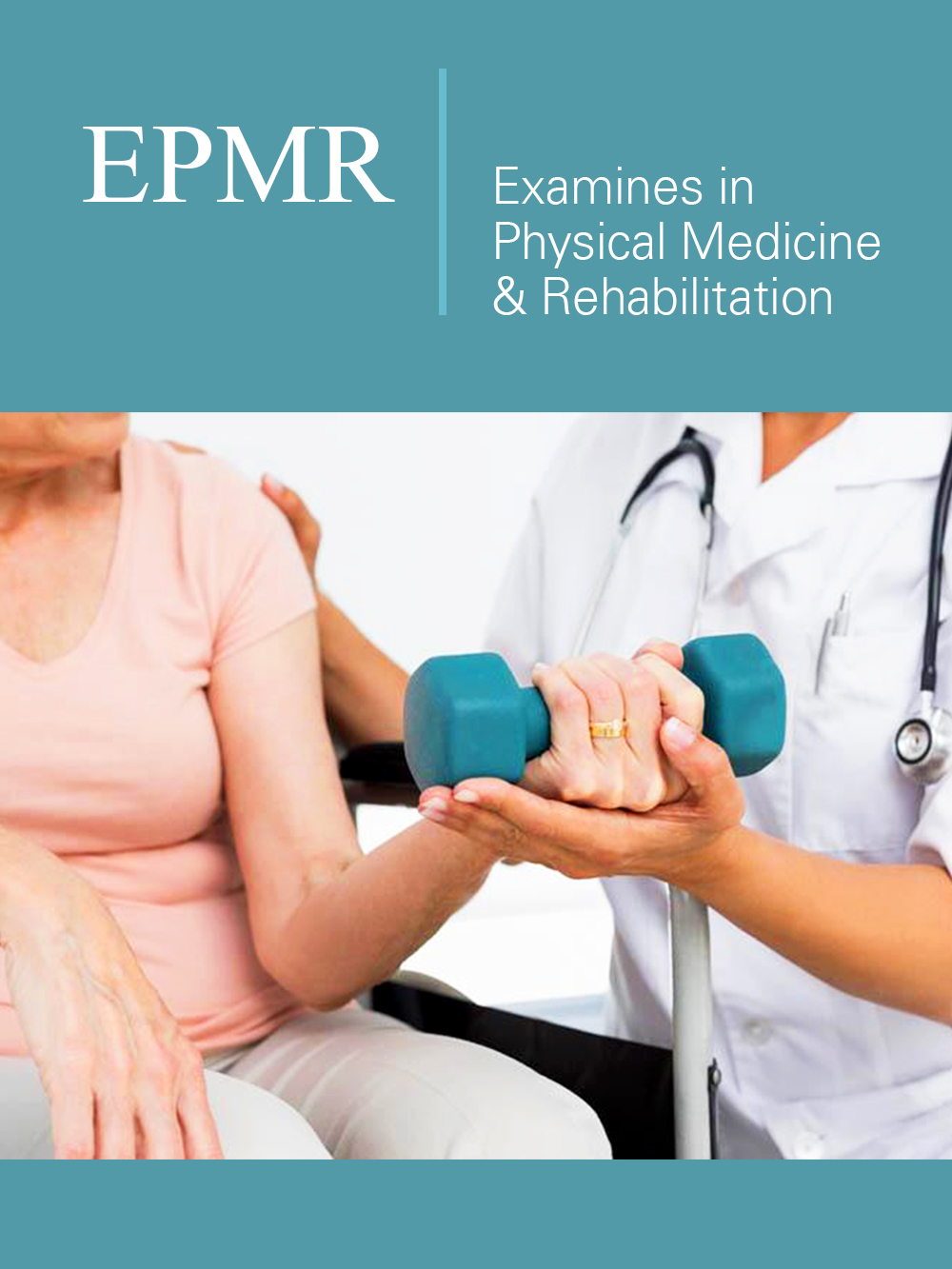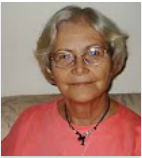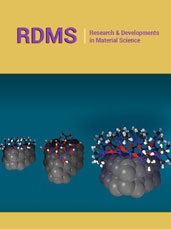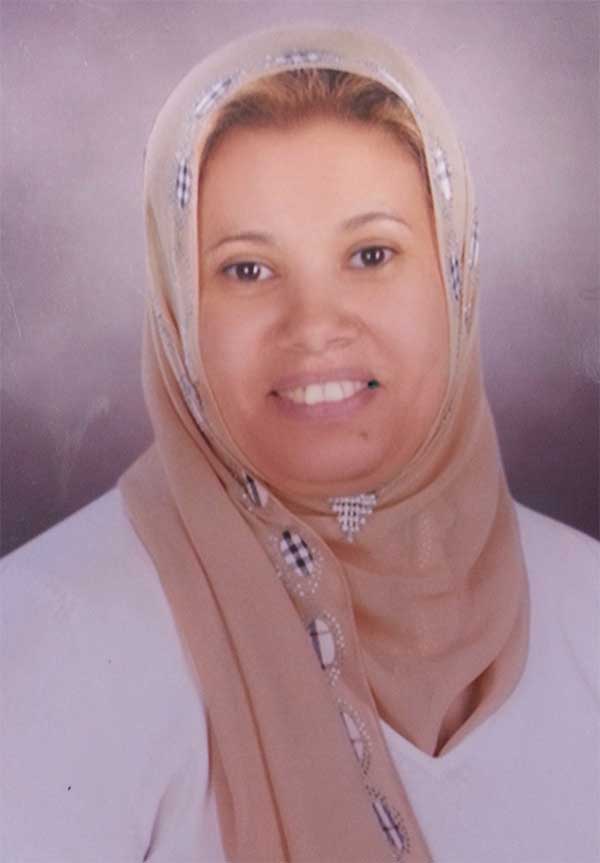- Submissions

Full Text
Examines in Physical Medicine and Rehabilitation: Open Access
Co-occurrence of Depression and Low Back Pain in Adults Treated in Mental Health Centers in Silesia (Poland)
Jochemczyk Zofia1, Brust Zuzanna1, Ustupska-Steczowicz Anna2 and Piejko Laura3*
1Physiotherapy Faculty, The Jerzy Kukuczka Academy of Physical Education, Poland
2Marzenie Rehabilitation Center, Poland
3Clinical Unit of Physiotherapy, Clinical Mental Health Hospital SPZOZ in Rybnik, Poland
*Corresponding author:Piejko Laura, Department of Clinical Physiotherapy, Clinical Unit of Physiotherapy in Psychiatry, The Jerzy Kukuczka Academy of Physical Education, Katowice, Poland and Clinical Unit of Physiotherapy, Clinical Mental Health Hospital SPZOZ in Rybnik, Rybnik, Poland
Submission: January 31, 2025;Published: February 19, 2025

ISSN 2637-7934 Volume5 Issue3
Abstract
Background: According to the WHO it is estimated that depression will soon be the leading cause of
disease and premature death in the world. There is a connection between chronic pain and mood
disorders. Severe pain very often leads to mood disorders. Patients who struggle with pain symptoms
may actually suffer from depressive disorders. Research shows that 75-80% of patients meeting the
criteria for depressive disorders according to various questionnaires report pain. This is an important
topic that requires further research and attention in the physiotherapy practice.
Aim of the study: To obtain knowledge on the prevalence of depression symptoms, scars and low back
pain or degenerative disc disease, its prevalence and functional impacts in adults treated in mental health
centers in Silesia, Poland.
Material and methods: The study was conducted by means of a diagnostic survey using a questionnaire
technique. Data from 82 adults and 147 questionnaires were analyzed. The Beck Depression Inventory
(BDI), the Roland-Morris Disability Questionnaire (RMQ), the Subgroups for Targeted Treatment Back
Screening Tool (STarT Back Tool), the Oswestry Disability Index (ODI), VAS scale and the Quality of Life
Assessment Questionnaire (WHOQOL-BREF) were used.
Results: 92.7% of adults treated for depression symptoms report low back pain. Patients with depression
and LBP have significantly lower results in the STarT, ODI and RMDQ questionnaires compared to patients
with depression and LBP from lumbar discopathy (p<0.05). In the VAS LBP level, depression level and
quality of life – somatic and psychological, no statistically significant differences were observed between
the study groups. Quality of life – social and environmental quality of life was significantly p<0.05 higher
in the depression and LBP patients compared to the participants with lumbar discopathy.
Conclusion: Functional negative impacts of depression were significantly greater in patients with
depression and LBP from lumbar discopathy compared to patients with depression and LBP only. Higher
depression level is significantly associated with greater pain, worse quality of life and greater negative
impact on daily functioning.
Keywords:Depression symptoms; Depression; Low back pain; LBP; Degenerative disc disease
Introduction
Psychosomatics concerns the influence of psychological factors on the health and quality of life of a person. It has long been observed that the state of our psyche is reflected in our physical condition. The state of the psyche translates into our musculoskeletal system, and emotional tension and chronic stress result in excessive muscle tension and can contribute to spinal pain. Knowledge of the basics of psychosomatics and awareness of the existence of such relationships will allow for much more effective physiotherapy, regardless of its form. In the field of physiotherapy, we are interested in how mental disorders and mood disturbances can affect the ailments which patients report to physiotherapists. Depression is characterized by feelings of sadness, loss of interest and joy, as well as feelings of guilt, low self-esteem, sleep and appetite problems, chronic fatigue and cognitive difficulties [1]. Depression significantly affects the quality of life of the patients, limiting their ability to function in various aspects of life, both in the social and professional sphere. Women are more predisposed to the disease than men. The causes of depression are complex and multifaceted. The main factors include endogenous, psychological and somatic factors. Psychosocial factors also play a significant role, e.g. loss of a loved one, loss of job or personal problems. Stressful situations from childhood, such as domestic violence or emotional neglect, also play an important role in the pathogenesis of depression [2,3].
According to the WHO forecasts, about 280 million people worldwide struggle with depression [1]. The World Health Organization predicts that by 2030 it will become one of the most common diseases in the world. It is estimated that depression will soon be the leading cause of disease and premature death [4]. The percentage of depression cases is still growing. In the USA, about 8% of the population suffers from depression [5], while in Europe data from 2019 indicate that it is 7.2% [6]. In Poland, the number of people suffering from depression is about 4% (approx. 1.5 million) people [7].
There is a connection between chronic pain and mood disorders. Severe pain very often leads to mood disorders. Patients who struggle with pain symptoms may actually suffer from depressive disorders. It is worth noting that one of the early symptoms of depression is pain, which can significantly affect the patients’ quality of life [8]. A certain relationship can be observed - the intensity of depression and anxiety will cause an increase in pain and it will work the other way round - the worse the mental state, the more pain will be felt. The studies of Kirmayer et al. [9] show that 75-80% of patients meeting the criteria for depressive disorders according to various questionnaires report pain. This is an important topic that requires further research and attention in physiotherapy practice [9].
The biopsychosocial model on pain approach and pain management refers to the interaction between biological, psychological and social factors in the experience of pain. It takes into account various aspects influencing the experience of pain. In this approach, the disease is treated as a long-term stressor that affects both the person and their immediate environment. This model assumes that all factors interpenetrate and none of them can explain the entire picture of the disease on their own. A holistic approach (taking into account all the factors mentioned above), which interact with each other, is characteristic to this approach [10-12]. It is important for physiotherapists to remember that Lower Back Pain (LBP) is considered as a long-term stressor that affects the entire patient and their functioning.
Scars are an inevitable consequence of trauma or medical procedures and there are many studies showing that the occurrence of scars is associated with LBP. However, there are very few studies regarding scars as a source of emotional disorders. The patient may feel worse when touching or looking at the scar, feel disgust towards the scar and therefore his body. This applies especially to scars in the area of exposed skin (face, neck, décolleté and hands) [13]. It has been proven that if a scar causes chronic pain and significant mobility loss, the probability of developing depressive disorders is increased [14,15]. Therefore, optimal scar care and scar management should also be of fundamental importance for psychiatrists and a physiotherapist [14,16,17]. The connection and co-occurrence of depression and lower back pain seems to be an area that is still under-researched. The studies on this topic are lacking in number. In the field of physiotherapy the psychosomatic approach is still not widespread. Patients and physiotherapists rarely consider the psychosomatic cause of the origin of pain. Therefore, the authors of this study point out that this topic requires more research and recognition and in the future the results may contribute to improving the quality of therapy offered and the quality of life of patients.
Aim
The overall aim of the study was to obtain knowledge on the prevalence of depression symptoms and low back pain or degenerative disc disease, its prevalence and functional impacts in adults treated in mental health centers in Silesia, Poland.
The aim of the study was to obtain knowledge on:
a) Co-occurrence of depression symptoms in low back pain
and degenerative disc disease (lumbar discopathy) patients.
b) Functional impacts of depression symptoms in low
back pain and degenerative disc disease (lumbar discopathy)
patients.
c) The relationship between the level of depression and the
quality of life and pain levels in low back pain and degenerative
disc disease (lumbar discopathy) patients.
d) The relationship between the occurrence of scars and the
level of depression, quality of life and pain in low back pain and
degenerative disc disease (lumbar discopathy) patients.
Material and Methods
The study was conducted in several mental health centers
located in Silesia, Poland:
a) “Feniks” Mental Health Center, Gliwice, Poland.
b) PZZOZ in Bedzin, Mental Health Ward in Czeladz Hospital,
Czeladz, Poland.
c) “Przestrzen” Psychotherapeutic and psychiatric Center,
Katowice, Poland.
d) “Kompas” Psychotherapeutic and therapeutic Center,
Bedzin, Poland.
e) “Impuls” Beskid Center for Therapy and Psychoeducation,
Bystra, Poland.
A. The inclusion criteria were: Age 20-40, consent to participate in the study, depression symptoms on the Beck (BDI) Scale at ≤12 points, no active cancer disease, no history of spine surgeries, severe trauma and comorbidities affecting the spine (e.g. ankylosing spondylitis, chronic rheumatic arthritis, fibromyalgia syndrome etc.).
B. The exclusion criteria included: Lack of consent to participate in the study, age >20 and <40, no depression on the Beck (BDI) Scale (score >12), active cancer disease, history of spine surgeries, severe trauma and comorbidities affecting the spine (e.g. ankylosing spondylitis, chronic rheumatic arthritis, fibromyalgia syndrome, severe traffic accidents etc.).
Measurements tools
The research tools were Polish language paper-version questionnaires. The questionnaires were anonymous. The questionnaires were provided by the medical personnel between December 2023 and April 2024 in the mental health facilities. Mental health centers patients (respondents) were asked to complete the questionnaires either online or on paper. Patients were also informed in writing about the study purpose and that he may withdraw at any time without prejudice to further treatment. The patients were asked to complete the questionnaires by themselves but could also have asked medical personnel for help if needed.
VAS Scale (VAS): The VAS (Visual Analog Scale) is a commonly used tool to assess pain intensity and other subjective sensations. The scale has two extreme points: no pain (0) and the most intense pain imaginable (10). In this study, a modified version was used, where the numbers at the extreme ends are accompanied by drawings of faces - smiling, symbolizing no pain, and contorted in a grimace of pain, indicating the most severe pain. Due to its readability and high reliability and repeatability, this scale is the most commonly used tool to describe pain. A disadvantage is that 7-11% of patients have difficulty understanding the extreme values on the scale [18,19].
Beck Depression Inventory (BDI): The Beck Depression Inventory (BDI) is used to assess depression and is one of the most popular diagnostic tools due to its ease of completion and multidimensionality. The questionnaire contains 21 statements regarding symptoms of depression, such as sadness, guilt, loss of interest, decreased energy, and sleep and appetite disorders. The patient completes the scale by selecting one of four answers describing their well-being, scored from 0 to 3. The sum of the points gives a score ranging from 0 to 63, which determines the level of depression in the study group [20,21]. A score of 0-11 points indicates no depression, 12-19 indicates mild depression, the range of 20-25 points indicates moderate depression, and 26- 63 indicates a severe episode of depression [22].
Roland-Morris Disability Questionnaire (RMQ): The Roland- Morris Disability Questionnaire (RMQ) is a tool used to assess the degree of disability associated with low back pain. It consists of 24 simple questions about daily activities, which the patient marks if they experience difficulty in performing them. The maximum number of points is 24, which indicates complete disability, while the minimum score is 0, which indicates no difficulty. The RMQ is valued for its high sensitivity and simplicity, which makes it a useful tool in everyday physiotherapy practice [23,24].
Subgroups for Targeted Treatment Back Screening Tool (STarT Back Tool): The STarT Back Tool is a questionnaire for assessing Low Back Pain (LBP) in adults. It consists of 9 items that assess physical factors (lower limb pain, comorbid pain, and disability) and psychosocial factors (bothersomeness, catastrophizing, fear, anxiety and depression). Patients are asked to rate each of the 9 statements by selecting “agree” or “disagree,” except for the question about pain bothersomeness, which uses a Likert scale (from “not at all” to “extremely bothersome”). Based on the responses total (questions 1–9) and psychosocial (questions 5–9) scores are calculated. A total score of ≤4 points indicate “low risk” for LBP. A score of ≥4 in both subscales qualify for “high risk”, while a score of ≥4 total and ≤4 in the psychosocial subscale indicates “medium risk” of LBP [25,26].
Oswestry Disability Index (ODI): The Oswestry Disability questionnaire assesses pain-related disability in people suffering from low back pain. The questionnaire consists of 10 items, 1 concerning pain and 9 concerning limitations in various activities of daily living. The respondent indicates a rating on a scale from 0 to 5, where 5 indicate the greatest disability. The points from each section are summed, multiplied by 2 and expressed as a percentage. The maximum score is 100% and expresses the maximum disability caused by low back pain. In this study, the questionnaire was used in its basic version, in which the score is expressed as a percentage and represents Oswestry Disability Index (ODI) with respectively: 0–20%=minimal disability; 21–40%= moderate disability; 41%-60%=significant disability; 61%–80%=significant disability that severely limits daily activity; 81%–100% non-ambulatory, depended patients [27,28].
WHO Quality of Life Bref Questionnaire (WHOQOLBREF): The WHOQOL-BREF questionnaire was created based on the WHOQOL-100 questionnaire and it is its shortened version, consisting of 26 questions. It allows for a simultaneous assessment of the quality of life in the somatic, social, environmental and psychological spheres of the examined persons. The range of points for each question is 1-5 and in the individual domains one can obtain a maximum of 20 points. In each of the domains, the higher obtained score, the better quality of life [29,30].
Statistical analysis
Variables were examined for normality of distribution by the Shapiro-Wilk test. In variables that had non-normal distribution the U Mann-Whitney test and rho-Spearman’s rank correlation coefficient tests were used. The level of significance was set at p≤0.05. All computations were made in IBM SPSS Statistics 26 software.
Results
Between 1 December 2023 and 19 April 2024, 164 data from 164 patients were collected. 17 surveys (10.4%) were excluded because of incomplete questionnaires. Finally, data from 147 questionnaires were analyzed in the study. For the purposes of statistical analysis, the respondents with depression and Low Back Pain (LBP) (N=65) were separated from those reported with low back pain from the diagnosis of degenerative disc disease (lumbar discopathy) (N=17).
Baseline characteristics
The average age of individuals with depression and LBP was 28.71 years, while the average age of individuals with depression and lumbar discopathy was 35.65 years. In the group of people with depression and LBP, women constituted 83.1% of the group (54 people), while in the group of people with depression and discopathy, women constituted 70.6% (12 people). Men were less numerous in both groups, respectively 16.9% (11 people) in the group with LBP and 29.4% (5 people) in the group with discopathy. In terms of education, people with depression and LBP have predominated secondary education (52.3%, or 34 people) and higher education (43.1%, 28 people), while vocational and primary education are less common (3.1% and 1.5%, respectively). In the group of people with lumbar discopathy, people with secondary education (52.9%, or 9 people) and higher education (41.2%, 7 people) also dominate, although there were no people with primary education, and one person (5.9%) had vocational education.
When analyzing the place of residence, in the group with depression and LBP the largest percentage are people from small towns (44.6%, 29 people), then from large cities with more than 300 thousand inhabitants (35.4%, 23 people), and the smallest percentage of people live in the countryside (20%, 13 people). In the group with lumbar discopathy, people from small towns dominate (58.8%, 10 people), then from large cities (35.3%, 6 people), and only 5.9% of respondents live in the countryside (1 person).
In terms of the type of work performed, in the group with depression the largest number of people do sedentary work (55.4%, 36 people), then physical work (27.7%, 18 people), and a smaller percentage are unemployed (10.8%, or 7 people) and pensioners/ retirees (6.2%, 4 people). In the group with discopathy, people with sedentary work also predominate (47.1%, 8 people), although the unemployed constitute a larger percentage (29.4%, i 5 people), while 11.8% (2 people) perform physical work, and pensioners also constitute 11.8% (2 people).
The LBP in the last month occurred in 92,7% respondents; of which 90,8% patients with depression and LBP and in 100% people with depression and lumbar discopathy. 80% of patients with depression and LBP and 76,5% of patients with depression and lumbar discopathy claimed that depression symptoms worsened their lumbar pain. Frequency of taking medications was primarily 1-2 times a week (50% of the respondents). Leisure time physical activity declared 58,5% of the respondents on the mostly moderate (52,1%) level. 27 patients (32,9%) had scars located on their trunk or back. 57.3% of the patients use physiotherapy for back pain treatment, but still 44,6% patients with LBP and 35,3% patients with lumbar discopathy declared no physiotherapy treatment and 42,7% and 76,8% respectively no other forms of treatment. Baseline characteristics of the patients are presented in (Table 1).
Table 1:Baseline characteristics (N = 82).

N=Number of participants, SD=Standard Deviation; In all cases, the differences between groups were not statistically significant (p > 0.05).
Functional impacts of depression
Patients with depression and LBP have significantly lower results in the STarT, ODI and RMDQ questionnaires compared to patients with depression and LBP from lumbar discopathy (p<0.05). In the VAS LBP level, depression level and quality of life – somatic and psychological, no statistically significant differences were observed between the study groups. Quality of life – social and environmental quality of life was significantly p<0.05 higher in the depression and LBP patients compared to the participants with lumbar discopathy. Detailed data are presented in (Table 2).
Table 2:Questionnaire results (N = 82).

N=Number of Participants, SD=Standard Deviation; LBP= Low Back Pain; 1Oswestry Disability Index; 2Roland Morris Disability Questionnaire; 3Quality of Life WHOQOL-BREF; * U Mann-Whitney Test.
The relationship between the level of depression and the quality of life and pain level
The first to be examined were the relationships between the level of LBP and depression and the quality of life of the respondents and the pain they experience. For this purpose, the rho-Spearman correlation analysis was performed (Table 3). The results of the analysis showed that the level of depression significantly correlates with all the variables studied. In the STarTBackTool questionnaire the correlation was strong and positive, in the VAS, ODI, RMDQ scores correlated positively and moderately. The quality of life in the psychological approach correlates strongly and negatively, the somatic, social and environmental quality of life – moderately and negatively. To explore the analysis results more thoroughly, the next step was to analyze both groups separately (Table 4).
Table 3:The relationship between depression levels and patients’ quality of life and pain (N = 82).

N=Number of participants, LBP= Low Back Pain; 1Oswestry Disability Index; 2Roland Morris Disability Questionnaire; 3Quality of Life WHOQOL-BREF.
Table 4:The relationship between depression levels and quality of life and pain depression and LBP patients compared to the patients with LBP from lumbar discopathy (N = 82).

N=Number of participants, LBP= Low Back Pain; 1Oswestry Disability Index; 2Roland Morris Disability Questionnaire; 3Quality of Life WHOQOL-BREF.
In the group of patients with depression and Low Back Pain (LBP) in STarT Back Tool (Total) questionnaire, the correlation coefficient was 0.670, which indicates a strong positive relationship - which suggests that depression may intensify problems related to low back pain (p=0.001). In the STarT Back Tool (Psychosocial) questionnaire, the coefficient was 0.739, which indicates a very strong positive relationship – depression level is strongly associated with the pain intensity (p=0.001). Psychological quality of life also has a correlation coefficient of -0.657, which indicates a strong negative correlation – higher levels of depression significantly worsen the assessment of quality of life in the psychological sphere with the correlation being statistically significant (p =0.001).
For pain on the VAS scale, the correlation coefficient was 0.383, which indicates a moderate positive relationship - a higher level of depression is associated with a greater sensation of pain (p=0.001). The ODI has a correlation coefficient of 0.473, which indicates a moderate positive relationship - patients with higher levels of depression are more likely to report a greater impact of pain on their lives (p=0.001). For the RMDQ, the correlation coefficient was 0.410, which also indicates a moderate positive relationship - a higher level of depression is associated with a greater impact of pain on the patient’s daily functioning (p= 0.001). In relation to quality of life: somatic quality of life has a correlation coefficient of -0.402, which indicates a moderate negative relationship - a higher level of depression is associated with a worse assessment of the somatic aspect of quality of life, and the value of p=0.001 confirms statistical significance. For social quality of life, the correlation coefficient is -0.396, which indicates a moderate negative correlation – depression significantly worsens patients’ social relationships and quality of life in this area (p=0.001). Environmental quality of life has a correlation coefficient of -0.428, which also indicates a moderate negative correlation – higher levels of depression are associated with lower quality of life in the environmental context (p=0.001).
The results indicate that higher levels of depression are associated with greater pain, worse quality of life (somatic, psychological, social and environmental), and also with a greater impact of pain on daily functioning. All correlations are statistically significant, which suggests that depression plays a key role in the experience of pain and quality of life of patients with LBP. The analysis of the correlation between the level of depression and various aspects of the quality of life and pain in patients with depression and Low Back Pain (LBP) is presented in (Table 4).
In the group of participants with depression and LBP from lumbar discopathy the STarT Back Tool (Psychosocial) questionnaire has a correlation coefficient of 0.651 (p=0.005), which indicates a statistically significant strong positive relationship. Quality of life: somatic sphere has a correlation coefficient of -0.596 (p=0.012), which means a statistically significant strong negative correlation. Psychological quality of life shows a very strong negative correlation with a correlation of -0.737 (p=0.001), which indicates a significant negative impact of depression on this aspect of life. The results suggest that depression significantly affects psychological and somatic quality of life, as well as the STarT Back Tool Psychosocial sphere. The remaining variables, although they show some correlations with the level of depression, were statistically insignificant. The detailed analysis is presented in (Table 4).
The occurrence of scars and the level of depression, quality of life and pain in low back pain and degenerative disc disease (lumbar discopathy) patients
In the group of people with depression and LBP (n=18) the variable of positive scar occurrence did not correlate in a statistically significant way with all variables (Table 5). In the group of participants with depression and LBP from lumbar discopathy a statistically significant (p=0.019), moderate positive (0.579) correlation was found for the STarT Back Tool (Total) questionnaire and also statistically significant (p=0.004) strong positive correlation (0.658) was found for the STarT Back Tool (psychosocial) questionnaire. The impact of ODI has a correlation coefficient of 0.483 (p=0.049), which indicates a moderate positive relationship, which is also statistically significant. Other relationships, such as the level of pain, depression and quality of life in various aspects, although showing some correlations, are not statistically significant (Table 5).
Table 5:The relationship between scar occurrence and the level of depression, quality of life and pain in low back pain and degenerative disc disease (lumbar discopathy) patients (N =27).

N=Number of participants, LBP=Low Back Pain; 1Oswestry Disability Index; 2Roland Morris Disability Questionnaire; 3Quality of Life WHOQOL-BREF.
Discussion
Depression makes everyday functioning more difficult, negatively affects overall well-being and decreases quality of life. The overall aim of the study was to obtain knowledge on the prevalence of depression symptoms and its functional impacts in adults with Low Back Pain (LBP) treated in mental health centers in Silesia, Poland. In our study 92.7% of adults treated for depression symptoms report low back pain within the last month (of which 90,8% patients had depression and LBP and 100% patients had depression and lumbar discopathy). 13.94% (n=17) of the respondents have claimed to have been diagnosed with degenerative disc disease (lumbar discopathy). The respondents were mostly women (80,5%) in their 30s (+/-6,88 years), with secondary education (52.4%) and a sedentary job (53.7%), living in a small town (47.6%). Frequency of taking medications was primarily 1-2 times a week (50% of the respondents). Leisure time physical activity declared 58,5% of the respondents on the mostly moderate (52,1%) level. The studies show that women are more likely than men to develop depression and depressive disorders. Depression is less frequently detected in men, but men are also much less likely to seek medical help [31].
Parker et al. [32] analyzed hormonal changes in both women and men and suggest that a greater activity of the limbic system in women affects their reactions to negative stimuli, which in turn predisposes them to a greater tendency for anxiety and depression. In the previously cited studies, it was found that depression can lead to an increased perception of pain, and consequently, in women, when the limbic system is hyperactivated, it can also lead to more negative feelings associated with pain, which will result in a decrease in quality of life. In the group of people with depression and lumbar discopathy, women constituted 70.6% and in this group, the results of quality of life indicated its decrease, which may be due to the predominance of women in this group.
80% of patients with depression and LBP and 76.5% of patients with depression and lumbar discopathy claimed that depression symptoms worsened their lumbar pain. But only 57.3% of the patients had physiotherapy for low back pain and 44.6% of the patients with LBP and 35,3% patients with lumbar discopathy declared no physiotherapy treatment and 42,7% and respectively 76,8% no other forms of treatment. Hemmings et al. [33] highlighted the barriers of physiotherapy in mental health in daily practice. Those barriers were: negative experience of physiotherapy resulting in decreased engagement both the therapist and the patient; long complex processes with a lack of service integration, low mood and lack of patients’ motivation to the treatment.
In our study functional negative impacts of depression were significantly greater in patients with depression and LBP from lumbar discopathy compared to patients with depression and LBP only. The study group consisted of people diagnosed with depression with the result on the Beck Depression Inventory above 12 points, while at the same time struggling with lower back pain and LBP from discopathy. It was shown that the co-occurrence of depression and back pain significantly contributes to a decrease in the quality of life. The level of depression statistically significantly correlates with the quality of life, pain and psychological aspect of the WHOQOL-BREF QoL questionnaire as well as with the psychosocial part of the STarT Back Tool. The higher the level of depression, the greater the intensity of problems with back pain was observed. Similar results were reported in the study by Oliveira et al. [34] and Tsuji et al. [35]. In the study by Oliveira et al. [34] 284 patients with anxiety and depression experienced more severe pain and higher levels of pain-related disability. In the study by Tsuji et al. [35] the effect of depression on patients with chronic low back pain in Japan was studied. This study found a significant association between depression and more severe pain, poorer quality of life, and increased impairment of daily functioning and activity. Oliveira et al. [34] suggest that a comprehensive therapeutic approach combining psychological treatment and support with physical therapy will be more effective for patients and will have a positive impact on symptom reduction and improved quality of life. Those suggestions are supported by the results of a recent systematic review by Hajihasani et al. [36]. Adding to routine physical therapy cognitive behavioral treatment component resulted in pain and depression reduction, improvement in quality of life and enhanced function in patients with chronic low back pain.
In the study conducted by Łabuz-Roszak et al. [37] regarding the occurrence of pain among patients with multiple sclerosis, it was noted that at the time of pain intensification, symptoms of depression and anxiety were statistically significantly higher, compared to people without pain. In connection with the above it is worth controlling the patient’s emotional state at the beginning of physiotherapy, because it can significantly affect further treatment.
Higher depression level was associated significantly with greater pain, worse quality of life and greater negative impact on daily functioning. In patients with both depression and degenerative disc disease, a significant effect was found in the STarT Back Tool Psychosocial questionnaire score and in the psychological and somatic quality of life in WHOQOL-BREF. Patients with lumbar discopathy reported a greater impact of pain on everyday functioning and disability index (ODI: M=34.12 vs. 25.02; RMDQ: M= 6.35 vs. 3.22), suggesting that degenerative disc disease may lead to more pronounced limitations in daily functioning. This claim can be confirmed by the results of the study by Carragee et al. [38], in which patients with back pain were divided into several groups, including a group of people with suspected discogenic pain and a group of people with non-specific low back pain. Pain level, physiological and psychological well-being were examined between the groups. The worst results in both depression and somatic pain were obtained by patients with discogenic pain. The Oswestry Index was also the lowest in this group. Despite similar pain levels (VAS=7.1) and duration, patients diagnosed with discopathy had poorer functional outcomes and abnormal psychological outcomes compared to other patients with chronic LBP. The study indicates that there are significant psychological difficulties that should be considered in the treatment of patients with chronic back pain.
Low back pain and degenerative disc disease (lumbar discopathy) patients’ average age was slightly higher (35.65) compared to the group with depression and LBP (28.71). In our study, patients with lumbar discopathy also consider themselves more disabled (ODI and RMDQ score). In the study of Czaja et al. [39] on the quality of life of patients with lumbar-sacral discopathy, it is mentioned that with the patient’s age, the subjective assessment of the degree of pain increases and that with the increase in disability, the quality of life decreases, which may reflect in our obtained results.
Twenty seven patients (32.9%) had scars located on their trunk or back, 27.7% in depression and LBP only and 47,1% in patients with depression and LBP from lumbar discopathy. No significant relationships were found between the occurrence of scars and the level of depression, quality of life and pain in patients with depression and LBP. A significant associations was found between the occurrence of scars and the level of functional independence (ODI) as well as STarT’s Back Tool physical factors (lower limb pain, comorbid pain, and disability) and psychosocial factors (bothersomeness, catastrophizing, fear, anxiety and depression) in patients with depression and LBP from lumbar discopathy. This result may indicate that it is not the presence of the scar itself that causes difficulties (most of them may be physiological scars). Notwithstanding scar tissue may cause pain, tightness, itching and difficulty in moving. Due to the way that scar tissue changes over time, these symptoms may occur months or years later and they may be associated with higher depression level (in our study 76.5% patients with depression and LBP from lumbar discopathy claimed that depression symptoms worsened their lumbar pain and other complaints). According to Allegri et al. [40] lumbar pain could be determined by inflammatory/scar tissue after spine surgery or in absence of previous surgery by disc herniation, hypertrophy of the articular processes or ligaments thickening. It is worth recommending that physiotherapists should pay greater attention to scars in relation to diagnosis and further therapeutic approach in lumbar discopathy patients.
Limitations of the Study
The main limitation of the study was lack of sample size estimation; the groups were small and unevenly numerous, which meant that the representativeness was insufficient. The surveys were anonymous, which made it impossible to verify the truthfulness and reliability of the respondents. There was no follow-up assessment. This study only included a comparison of the two groups. The results could have been more reliable if more patients had been examined and the results had been compared to other psychiatric care patients.
Conclusion
a. 92.7% of adults treated for depression symptoms report
low back pain. Co-occurrence was high and relevant.
b. Functional negative impacts of depression were
significantly greater in patients with depression and LBP from
lumbar discopathy compared to patients with depression and
LBP only.
c. Higher depression level is significantly associated with
greater pain, worse quality of life and greater negative impact
on daily functioning.
d. No relationships were found between the occurrence
of scars and the level of depression, quality of life and pain
in patients with depression and LBP. Scar occurrence shows
significant associations with the results in the STarT Back Tool
questionnaire as well as with the impact of disability index in
patients with depression and LBP from lumbar discopathy.
Acknowledgement
The authors are grateful to physicians, psychologists and nurses from mental health centers and hospital that contributed to this study. The authors would also like to thank the Jerzy Kukuczka Academy of Physical Education Clinical Unit of Physiotherapy in Psychiatry at Clinical Mental Health Hospital in Rybnik for help and assistance in conducting this study.
References
- (2025) World Health Organization. Depressive disorder (depression).
- Szkutnik-Fiedler D, Edmund Grześkowiak, Łukasz Wyrowski (2014) Chronic pain and depression. Academia Medica 7: 14-17.
- Rajewska-Rager A, Rybakowski J (2008) The role of stressful live events in the pathogenesis of depression. Neuropsychiatr Neuropsychol 3(3-4): 147-152.
- Chan VKY, Leung MYM, Chan SSM, Yang D, Knapp M, et al. (2024) Projecting the 10-year costs of care and mortality burden of depression until 2032: A Markov modelling study developed from real-world data. Lancet Reg Health West Pac 45: 101026.
- Mental Health America (2025) General mental health data. Quick Facts and Statistics About Mental Health.
- Eurostat (2021) 7.2% of people in the EU suffer from chronic depression. Statistics on Mental Health in the EU.
- National Health Fund on Health (2025) Depression.
- Wasilewski D, Wojnar M, Chatizow J (2010) Depression and pain: Polish epidemiologic study. Psychiatr Pol 44(3): 435-445.
- Kirmayer LJ, Robbins JM, Dworkind M, Yaffe MJ (1993) Somatization and the recognition of depression and anxiety in primary care. Am J Psychiatry 150(5): 734-741.
- Turk DC (1996) Biopsychosocial perspective on chronic pain. In: Gatchel RJ, Turk DC, (Eds.), Biopsychosocial perspective on chronic pain. Guilford Press, USA, pp. 3-32.
- Kuty-Pachecka M, Trzebińska M (2018) Chronic pain – definitions, models and cognitive-behavioural therapy. Psychiatr Psychol Klin 18(1): 41-48.
- Covic T, Adamson B, Spencer D, Howe G (2003) A biopsychosocial model of pain and depression in rheumatoid arthritis: A 12-month longitudinal study. Rheumatology (Oxford) 42(11): 1287-1294.
- Madejska M, Korban P (2013) Physiotherapeutic treatment of scars. Kosmetol Estet 4(2): 281-284.
- Sakabe FF, Ferreira FA, Rizzi GE, Maronezi VA, Sakabe DI, et al. (2024) Release of scars improves pain, vertebral mobility, and reduces the degree of disability in chronic low back pain. MTP Rehab J 22: 1369-1377.
- Fishbain DA, Cutler R, Rosomoff HL, Rosomoff RS (1997) Chronic pain-associated depression: Antecedent or consequence of chronic pain? A review. Clin J Pain 13(2): 116-137.
- Molina-Payá FJ, Sánchez Romero EA, Fernández-Carnero S, Noguera-Iturbe Y, Selva-Sarzo F (2024) Effect of transcutaneous neuromodulation on normalization of dermal body temperature and pain in a tender scar in the presence of low back pain: An update and case report. Sage Open Med Case Rep 12.
- Piejko L, Szołtysek I, Duda J, Polak A (2024) An unusual example of complex wound care with physical therapy treatments: A case report. Physiotherapy Review 28(1): 55-68.
- Makatsori M, Pfaar O, Calderon MA (2014) Allergen immunotherapy: Clinical outcomes assessment. J Allergy Clin Immunol Pract 2(2): 123-129.
- Wypyszewska J, Kopański Z, Kulesa-Mrowiecka M, Rowiński J, Furmanik F, et al. (2018) Clinical assessment of pain. J Clin Healthc 2: 6-11.
- Beck AT, Ward CH, Mendelson M, Mock J, Erbaugh J (1961) An inventory for measuring depression. Arch Gen Psychiatry 4: 561-571.
- National Institutes of Health (2025) Beck Depression Inventory II (BDI-II).
- Jackson-Koku G (2016) Beck depression inventory. Occup Med (Lond) 66(2): 174-175.
- Fiałkowski T, Szary S, Opara J (2018) The usefulness of the Roland-Morris scale in the everyday practice of a physiotherapist. Rehabilitation in Practice 1: 68-69.
- Stevens ML, Lin CC, Maher CG (2016) The Roland Morris disability questionnaire. J Physiother 62(2):116.
- Traeger A, McAuley JH (2013) STarT back screening tool. J Physiother 59(2): 131.
- Storm L, Rousing R, Andersen MO, Carreon LY (2018) Usefulness of the STarT back screening tool to predict pain problems after lumbar spine surgery. Dan Med J 65(12): A5517.
- Fairbank JC, Pynsent PB (2000) The Oswestry disability index. Spine (Phila Pa 1976). 25(22): 2940-2952.
- Mehra A, Baker D, Disney S, Pynsent PB (2008) Oswestry disability index scoring made easy. Ann R Coll Surg Engl 90(6): 497-499.
- Gnacińska-Szymańska M, Dardzińska JA, Majkowicz M, Małgorzewicz S (2012) The assessment of quality of life in patients with excessive body mass using WHOQOL-BREF form. Endocrinology, Obesity and Metabolic Disorders 8(4): 136-142.
- Kowalska M, Skrzypek M, Danso F, Humeniuk M (2012) Assessment reliability of the WHOQOL-BREF questionnaire in a study of quality of life among adults, the economically active population of the Silesian Agglomeration. Przegl Epidemiol 66(3): 531-537.
- Tereszko A, Dudek D (2017) Gender differences in mental disorders. Neuropsychiatr Neuropsychol 12(4): 162-169.
- Parker G, Brotchie H (2010) Gender differences in depression. Int Rev Psychiatry 22(5): 429-436.
- Hemmings L, Soundy A (2020) Experiences of physiotherapy in mental health: An interpretative phenomenological analysis of barriers and facilitators to care. Physiotherapy 109(5): 1-26.
- Oliveira DS, Mendonça LFV, Sampaio RSM, Castro-Lopes MPD, Ribeiro Azevedo (2019) The impact of anxiety and depression on the outcomes of chronic low back pain multidisciplinary pain management-A multicenter prospective cohort study in pain clinics with one-year follow-up. Pain Med 20(4): 736-s746.
- Tsuji T, Matsudaira K, Sato H, Vietri J (2016) The impact of depression among chronic low back pain patients in Japan. BMC Musculoskelet Disord 17(1): 447.
- Hajihasani A, Rouhani M, Salavati M, Hedayati R, Kahlaee AH (2019) The influence of cognitive behavioral therapy on pain, quality of life, and depression in patients receiving physical therapy for chronic low back pain: A systematic review. PMR 11(2): 167-176.
- Łabuz-Roszak B, Niewiadomska E, Kubicka-Bączyk K, Skrzypek M, Tyrpień-Golder K, et al. (2019) Prevalence of pain in patients with multiple sclerosis and its association with anxiety, depressive symptoms and quality of life. Psychiatr Pol 53(2): 475-486.
- Carragee EJ (2001) Psychological and functional profiles in select subjects with low back pain. Spine J 1(3): 198-204.
- Czaja E, Kózka M, Burda A (2012) Quality of life in patients with Lumbar-Sacral Discopathy. PNN 1(3): 92-96.
- Allegri M, Montella S, Salici F, Valente A, Marchesini M, et al. (2016) Mechanisms of low back pain: A guide for diagnosis and therapy. F1000Res.
© 2025 Piejko Laura. This is an open access article distributed under the terms of the Creative Commons Attribution License , which permits unrestricted use, distribution, and build upon your work non-commercially.
 a Creative Commons Attribution 4.0 International License. Based on a work at www.crimsonpublishers.com.
Best viewed in
a Creative Commons Attribution 4.0 International License. Based on a work at www.crimsonpublishers.com.
Best viewed in 







.jpg)






























 Editorial Board Registrations
Editorial Board Registrations Submit your Article
Submit your Article Refer a Friend
Refer a Friend Advertise With Us
Advertise With Us
.jpg)






.jpg)














.bmp)
.jpg)
.png)
.jpg)










.jpg)






.png)

.png)



.png)






